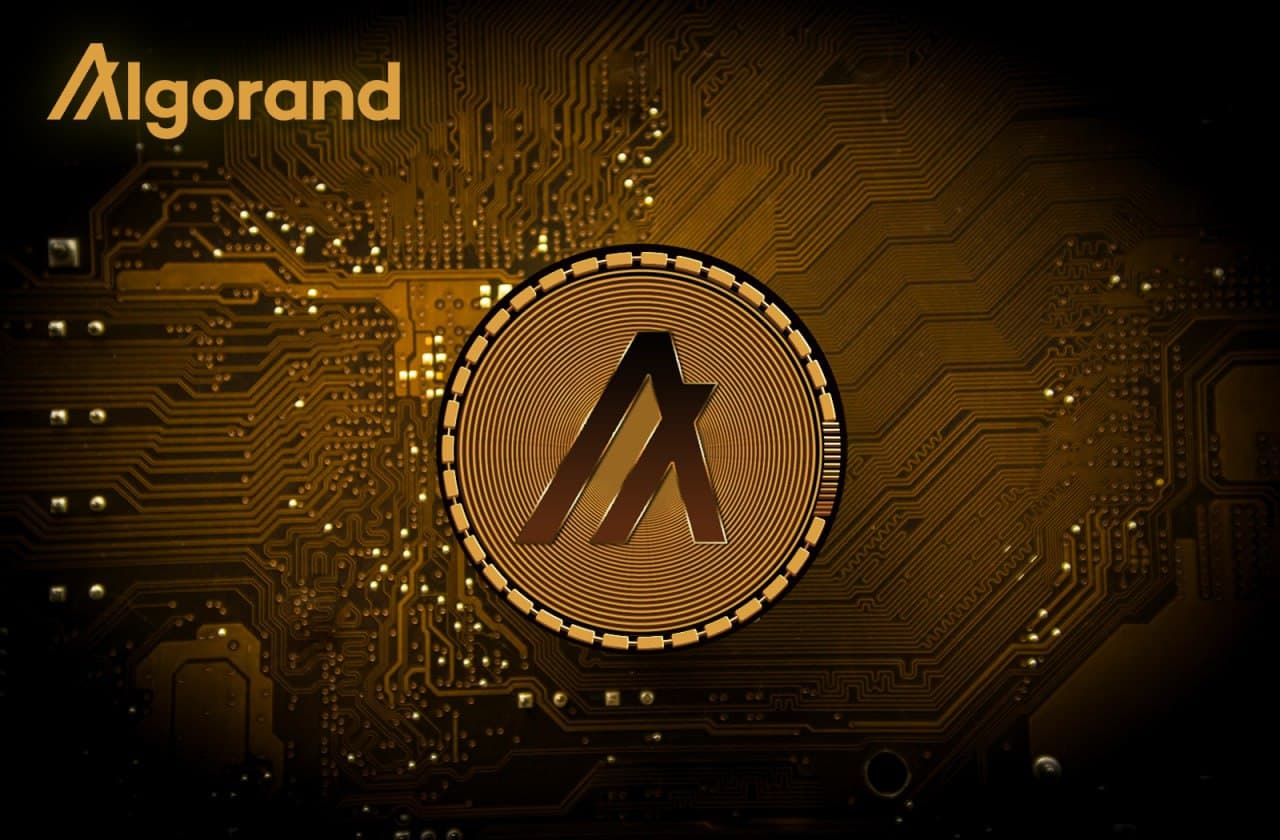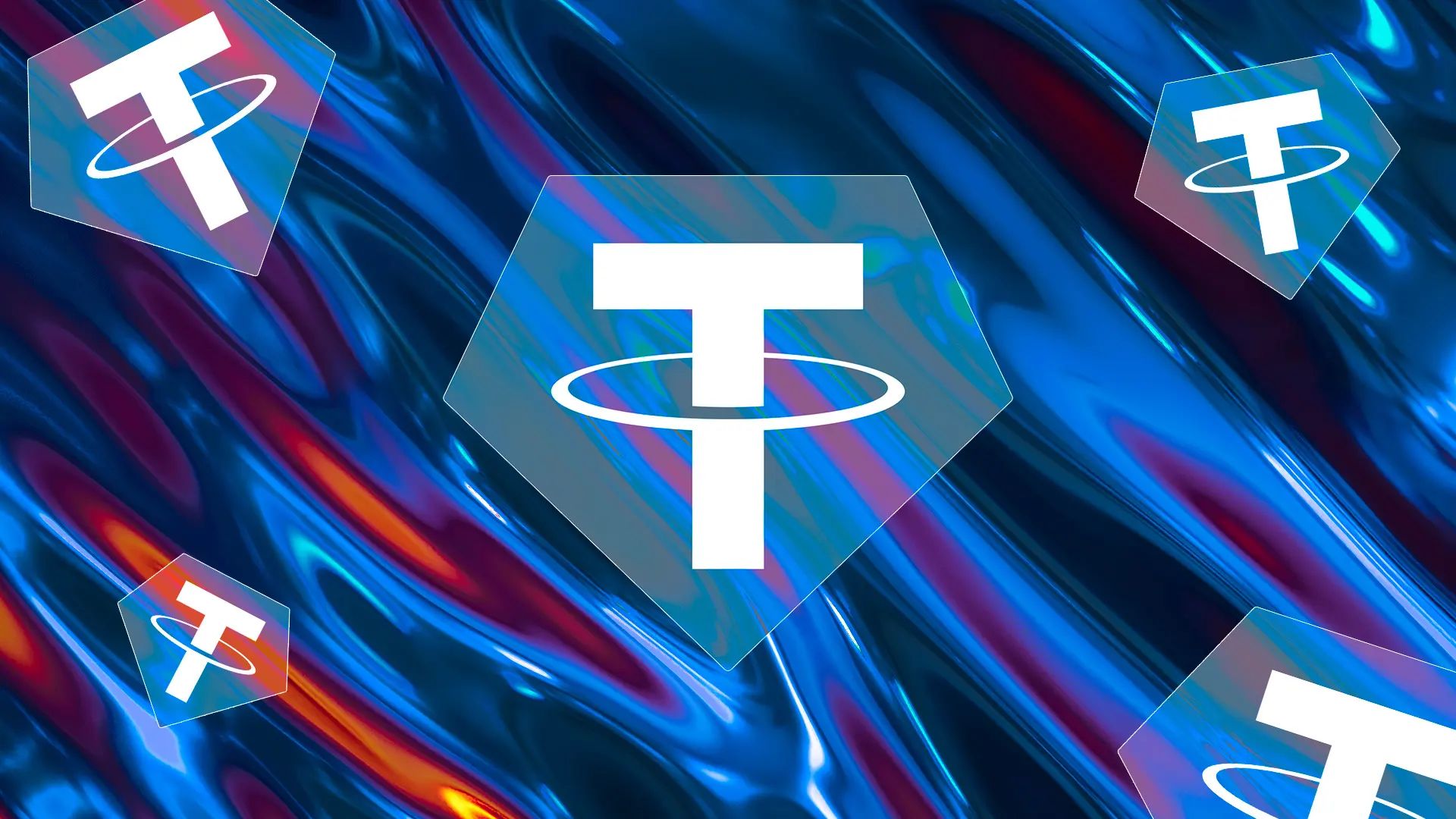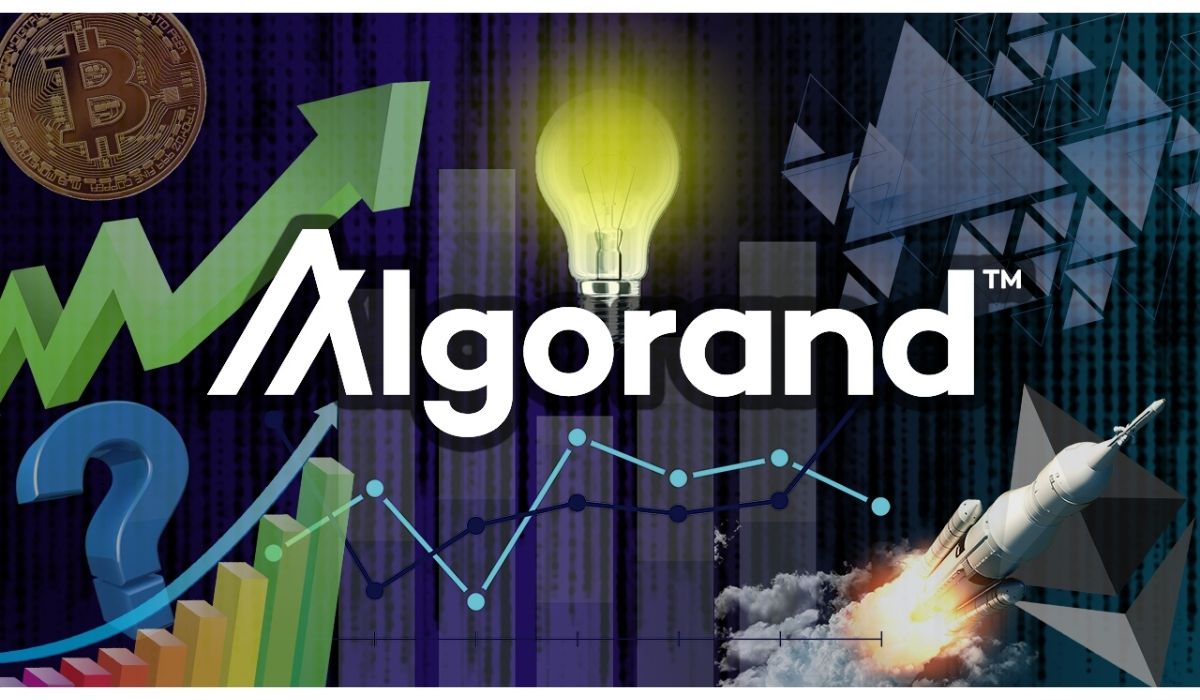Introduction
Welcome to the world of Algorand, a cutting-edge blockchain protocol that is revolutionizing the way transactions are executed and recorded. In this article, we will dive into the fascinating realm of Algorand’s transactions per second (tps) – a crucial metric that showcases the protocol’s speed and scalability.
Algorand, founded by computer scientist Silvio Micali, is designed to provide a secure, scalable, and decentralized platform for various applications. It utilizes a unique consensus mechanism, known as Pure Proof-of-Stake (PPoS), which ensures fast and secure transaction processing.
Transactions per second (tps) is a key metric that measures the capability of a blockchain network to handle a high volume of transactions within a given timeframe. It is an essential factor in determining the scalability and efficiency of a blockchain protocol.
Algorand boasts impressive tps capabilities, making it a viable solution for applications requiring quick and reliable transactions. By understanding the factors that influence tps in Algorand, we can gain a deeper insight into its performance and scalability.
Understanding Algorand
Before delving into the transactions per second in Algorand, it’s essential to have a basic understanding of how this innovative blockchain protocol works.
Unlike many other blockchain networks, Algorand utilizes a unique consensus algorithm called Pure Proof-of-Stake (PPoS). This consensus mechanism ensures decentralization and security while maintaining high performance and scalability.
In the Algorand network, a randomly chosen group of users, known as the “committee,” validates and confirms transactions. This committee is selected in a secure and unbiased way, ensuring that the network remains robust and resistant to attacks.
Algorand achieves consensus in a novel way called “binary Byzantine agreement.” This process allows the network to agree on a block of transactions without the need for extensive communication between nodes, ensuring fast and efficient transaction processing.
In addition to its consensus mechanism, Algorand also incorporates other unique features. These include atomic transfers, which allow for the execution of multiple transactions in a single atomic operation, and cryptographic sortition, which ensures fairness in committee selection.
Algorand’s focus on simplicity and scalability sets it apart from traditional blockchains. By utilizing innovative cryptographic techniques and a minimalistic design, Algorand can achieve high throughput and low latency, creating an optimized environment for transaction processing.
With its efficient and secure architecture, Algorand has gained significant attention in various industries. Its ability to provide fast and reliable transactions makes it a compelling option for applications such as decentralized finance (DeFi), asset tokenization, and supply chain management.
Now that we have a basic understanding of Algorand, let’s explore the transactions per second metric and how it reflects the protocol’s performance and scalability.
Transactions per Second (tps)
Transactions per second (tps) is a crucial metric that measures the speed and efficiency of a blockchain network in processing and confirming transactions. It represents the number of transactions that can be executed within a given timeframe, typically measured in seconds.
For Algorand, tps signifies the protocol’s ability to handle a high volume of transactions, showcasing its scalability and performance. Algorand has been designed to achieve remarkable tps figures, positioning it as a competitive blockchain solution in various industries.
The tps metric is influenced by several factors, including the network’s consensus mechanism, block size, transaction complexity, and the processing power of network participants. Algorand’s unique consensus algorithm, Pure Proof-of-Stake (PPoS), enables fast and secure transaction processing, contributing to its high tps capabilities.
Algorand tps figures are impressive, with the network consistently delivering high throughput. In its initial design, Algorand targeted a tps goal of 1,000. However, with continued research and development, Algorand has achieved even higher tps figures, surpassing the initial goal and reaching over 4,000 tps in certain scenarios.
It’s important to note that the achieved tps figures may vary depending on the specific network conditions and transaction complexity. Various real-world factors, such as network congestion and transaction size, can affect the overall tps performance.
Algorand’s innovative design and architecture, combined with its focus on scalability and efficiency, enable it to handle significant transaction volumes. This makes it a suitable choice for applications requiring fast and reliable transaction processing, such as payment solutions, decentralized exchanges, and gaming platforms.
Now that we understand the significance of tps in Algorand, let’s dive deeper into the factors that influence tps in the Algorand network.
Factors Affecting Transactions per Second (tps) in Algorand
Several factors play a significant role in determining the transactions per second (tps) in the Algorand network. Understanding these factors is crucial for assessing Algorand’s scalability and performance in real-world applications. Let’s explore the key factors that influence tps in Algorand:
1. Network Consensus Mechanism: Algorand’s Pure Proof-of-Stake (PPoS) consensus mechanism contributes to its high tps capabilities. PPoS enables fast and efficient transaction processing by randomly selecting and empowering a committee of users to validate and confirm transactions.
2. Block Size: The size of a block in the Algorand network affects tps. Larger block sizes can accommodate more transactions, leading to higher tps figures. Algorand allows for the creation of blocks with a maximum size of approximately 50 MB, ensuring ample room for transaction inclusion.
3. Transaction Complexity: The complexity of the transactions being executed in the Algorand network can impact tps. Simple transactions, such as value transfers, can be processed more quickly compared to more complex operations that involve smart contracts or other advanced features.
4. Participant’s Processing Power: The computational power of the network participants also affects tps. Algorand’s design allows for a large number of participants to concurrently engage in the consensus process, contributing to high tps figures.
5. Network Congestion: Like any blockchain network, Algorand may experience network congestion during times of high demand. Network congestion can temporarily affect tps as the network strives to process a larger volume of transactions. However, Algorand’s scalable design and efficient consensus algorithm help mitigate the impact of congestion and maintain high tps figures.
6. Transaction Size: The size of individual transactions can influence tps. Smaller transactions require less data processing and validation, allowing for higher tps. Algorand supports efficient transaction encoding, ensuring that transaction size is optimized.
Considering these factors, Algorand has paved the way for high tps figures by implementing an efficient consensus mechanism, allowing for large block sizes, facilitating simple transactions, harnessing the computational power of participants, and mitigating network congestion. These characteristics make Algorand a capable blockchain protocol for industries that require fast and scalable transaction processing.
Next, we will delve into Algorand’s performance and scalability to gain a comprehensive understanding of its capability in handling transactions.
Algorand’s Performance and Scalability
Algorand has pushed the boundaries of blockchain technology to deliver exceptional performance and scalability. Its unique design and innovative features contribute to its ability to handle a high volume of transactions with speed and efficiency.
One of the key factors that define Algorand’s performance is its high transactions per second (tps) capability. With tps figures surpassing 4,000 in certain scenarios, Algorand demonstrates its ability to process a significant number of transactions quickly.
Algorand’s scalable architecture allows for the parallel processing of transactions, enabling efficient utilization of network resources. This scalability comes from its pure proof-of-stake (PPoS) consensus mechanism, which ensures that a large number of network participants can actively contribute to the consensus process.
Furthermore, Algorand employs a block proposal mechanism that allows for the simultaneous creation and confirmation of multiple blocks. This feature enhances the network’s throughput and enables it to handle large transaction volumes without compromising speed or security.
In addition to its impressive performance, Algorand delivers on the scalability front. Scalability refers to a blockchain network’s ability to handle an increasing number of users and transactions without sacrificing efficiency. Algorand achieves scalability through its efficient consensus mechanism and by leveraging a large number of network participants to maintain and validate the blockchain.
The ability to scale effectively is crucial for the widespread adoption of blockchain technology, as it ensures that the network can accommodate the demands of applications in various industries, from finance to supply chain management.
Algorand’s performance and scalability make it an enticing choice for businesses and developers seeking a robust and efficient blockchain platform. Its speed and scalability, coupled with its high-level security and decentralization, position Algorand as a viable solution for a wide range of applications.
Now that we have explored Algorand’s performance and scalability, let’s take a closer look at real-world examples that demonstrate its impressive tps capabilities.
Real-world Examples of Transactions per Second (tps) in Algorand
Algorand’s transactions per second (tps) capabilities have been put to the test in various real-world scenarios, showcasing its efficiency and scalability. Let’s explore some examples that highlight Algorand’s impressive tps figures:
1. Decentralized Finance (DeFi): DeFi platforms require fast and reliable transaction processing to facilitate seamless interactions between users. Algorand has demonstrated its ability to handle high tps volumes, making it suitable for DeFi applications such as decentralized exchanges, lending platforms, and asset management solutions.
2. Payment Solutions: Algorand’s fast and scalable nature positions it as an ideal choice for payment solutions that require near-instant transactions. With high tps figures, merchants and users can experience swift and secure transactions, enhancing the overall user experience.
3. Gaming and Digital Assets: Gaming platforms that rely on blockchain technology can benefit from Algorand’s high tps capabilities. In-game transactions, asset transfers, and digital asset ownership can be seamlessly executed, ensuring a smooth gaming experience for users.
4. Supply Chain Management: In supply chain management, the ability to process a large number of transactions quickly and efficiently is crucial. Algorand’s tps figures allow for the seamless tracking and validation of supply chain events, enhancing transparency and reducing fraud.
5. Tokenization and Asset Management: Algorand’s high tps capabilities make it an ideal blockchain platform for tokenization and asset management solutions. With rapid transaction processing, Algorand can support the issuance, transfer, and management of digital assets, such as real estate tokens or tokenized securities.
These real-world examples demonstrate Algorand’s ability to cater to diverse industries and applications that require fast and scalable transaction capabilities. By providing a high level of performance and a reliable network, Algorand ensures the efficient execution of transactions for users and businesses alike.
It is important to note that the tps figures can vary based on network conditions, transaction complexity, and other factors specific to each use case. Nonetheless, Algorand’s design and architecture offer a solid foundation for achieving high tps figures in real-world scenarios.
In the next section, we will summarize the key points discussed and offer a final perspective on Algorand’s impressive transactions per second capabilities.
Conclusion
Algorand, with its impressive transactions per second (tps) capabilities, has proven to be a powerful blockchain protocol for a wide range of real-world applications. Through its unique consensus algorithm, Pure Proof-of-Stake (PPoS), Algorand achieves fast and secure transaction processing, providing scalability and performance.
The factors that influence tps in Algorand, including the network’s consensus mechanism, block size, transaction complexity, participant’s processing power, network congestion, and transaction size, collectively contribute to its high tps figures. Algorand’s scalable architecture and efficient design enable it to handle a significant volume of transactions with speed and efficiency.
Algorand’s exceptional performance and scalability make it a compelling choice for industries seeking a blockchain solution that can process transactions quickly and reliably. Whether it’s DeFi platforms, payment solutions, gaming, supply chain management, or tokenization and asset management, Algorand has demonstrated its ability to handle diverse use cases with ease.
Real-world examples further illustrate how Algorand’s tps capabilities have been successfully utilized in various industries. From facilitating swift DeFi transactions to providing seamless payment solutions and powering efficient supply chain management, Algorand showcases its potential to revolutionize different sectors.
While tps figures may vary depending on specific use cases and network conditions, Algorand’s commitment to speed, scalability, and security makes it a competitive player in the blockchain space. With ongoing research and development, Algorand aims to further improve its tps figures and expand its capabilities to meet the evolving needs of users and businesses.
In conclusion, Algorand’s impressive transactions per second capabilities, coupled with its innovative design and scalable architecture, position it as a leading blockchain protocol for applications requiring fast, secure, and efficient transaction processing.

























